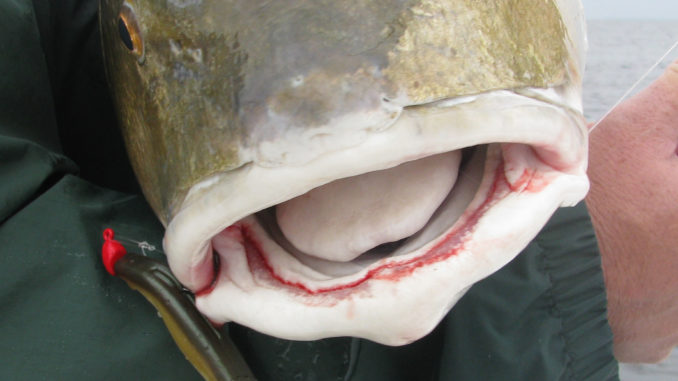
Over the past 20 years, the old drum fishery in the Pamlico Sound has grown to epic proportions. The heavy fishing pressure requires the fishery to be managed correctly, and the popping cork rig is a big help in reducing catch-and-release mortality, which typically arises from deep-hooking, stress from prolonged battles or improper handling when caught.
Guide Gary Dubiel believes old drum caught under a popping cork have a better chance of surviving release.
“From a conservation point of view, the popping cork rig is much less stressful on these fish than traditional methods,” he said. “To start off with, these fish never become deep-hooked.”
Dubiel said that 80 to 90 percent of the fish his parties catch are hooked in the corner of the mouth, in part because of the rig’s setup and in part because of way they strike the bait.
“The fish hits the bait and usually turns hard. The cork adds just enough resistance to put the hook in the corner of the mouth,“ he said.
Beyond the hook placement, Dubiel equips his anglers with medium-heavy action rods and tough, 30-pound braided line. The tough tackle enables his anglers to get the fish to the boat quickly and then back to water, preventing prolonged stress on the fish.
“From the hookup to release, our average turnaround time is around eight minutes; that makes a difference when you are trying to release these fish unharmed,” said Dubiel, who will also bend down the barbs on his hooks to make hook removal easier.



Be the first to comment